Six US-based figurative artists tackling themes of identity in fresh new ways
Figurative painting is undergoing a renaissance, for all the right reasons. Here, we consider the work of six rising, US-based artists using the genre to delve into, and deconstruct, notions of identity to exciting, multidimensional effect.
Throughout history, artists have used figurative painting to capture the characteristics that identify them and their surroundings, be that on an individual, societal or national scale. Politically, such art has been used to unite and divide, to assert and undermine, to celebrate and critique; while on a historic level, it has the power to preserve the prevailing ideas and cultural signifiers of a person or group of people for posterity.
There is a 20th-century western modernist conceit that “everything that could be said in paint had now been said”. This is simply not true.
Today, figurative painting is enjoying a notable resurgence in popularity, ranking high among art market trends, and many of the world’s most esteemed galleries have dedicated major exhibitions to contemporary proponents of the genre in recent years.
“I think it’s no accident that painting, especially figure painting, is living a sort of renaissance just as society is re-evaluating its injustices,” reflects Mexican artist Ana Segovia. “Painting has died many times throughout art history, its political, conceptual and even poetical efficacy brought into question time and time again.” Its latest decline, Segovia posits, appears to have stemmed from the 20th-century conceit of western modernists that ‘everything that could be said in paint had now been said’.
“This is simply not true,” the artist continues, because this painterly dialogue was “more like a monologue, made up of mostly men”, to the exclusion of people of colour, women and other minorities. “I think people are finally ready to hear those other voices.” Here, we spotlight six such collectable artists based in the US – both risen and on the rise – and whose practice explores identity, and its predefined confines, in innovative new ways.
1. Jonathan Lyndon Chase
Jonathan Lyndon Chase is making waves with their candid, deeply expressionistic practice, which spans painting, drawing, sculpture, installation and video works, touching upon themes of identity and connectivity. The Philadelphia artist’s career, Limna finds, has gained 23% momentum in the past three years, their pieces selling for six-figure prices on the secondary market. This is thanks, in no small part, to the raw emotions they evoke. “I try to paint very honestly with a delicacy to the body,” the artist told Bomb magazine.
Indeed, much of Chase’s work centres around gesturally rendered nude, or semi-nude, subjects interacting – often intimately – in everyday settings. Chase draws upon their own experiences and imaginings for the purpose, playing with technical elements, like “space and layering and surfacing” and different kinds of line and mark-making, to reflect what they term the complexity of queer and Black bodies. “For me, my work is a source to… think about different ways that you can exist,” they said. “There’s not just option A or B. There are so many ways.”
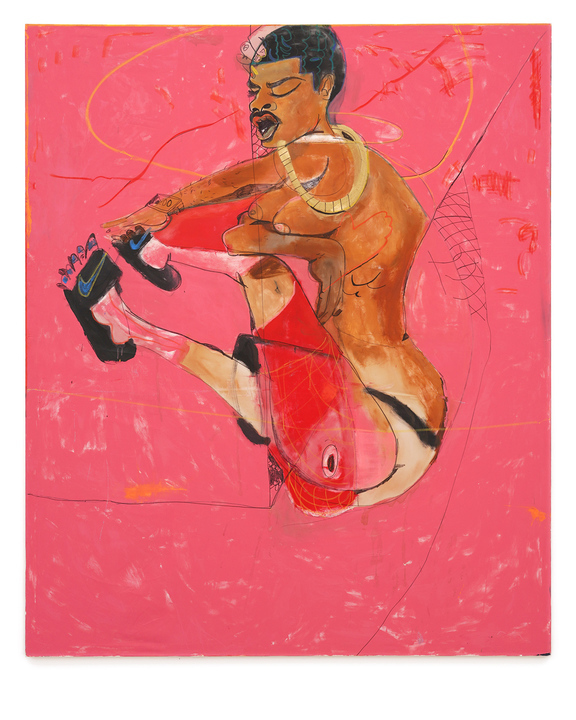
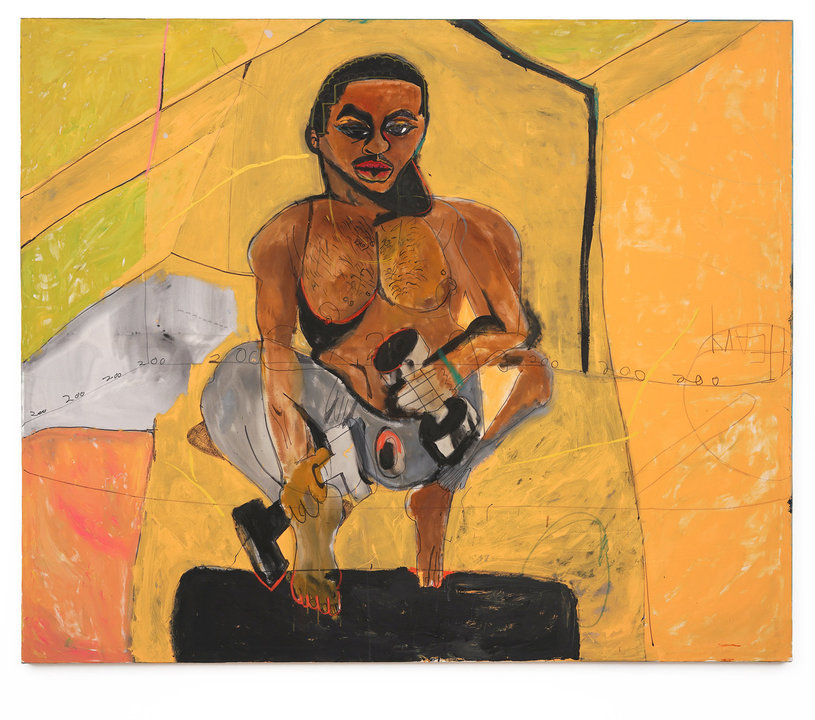
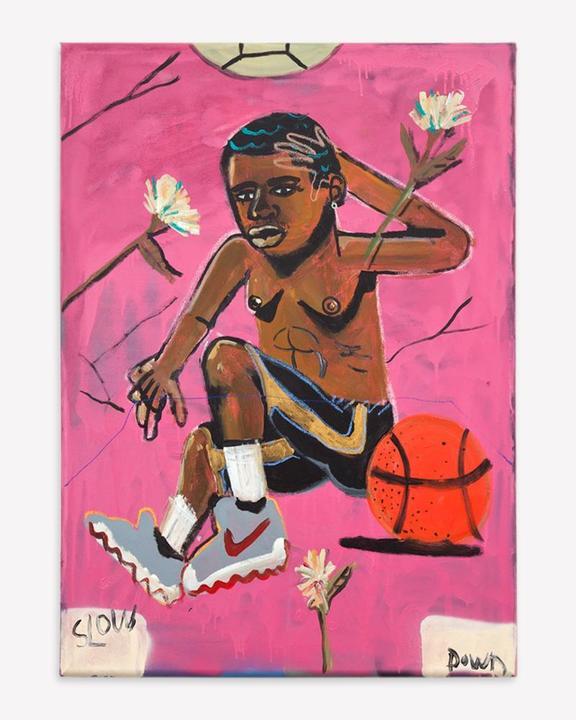
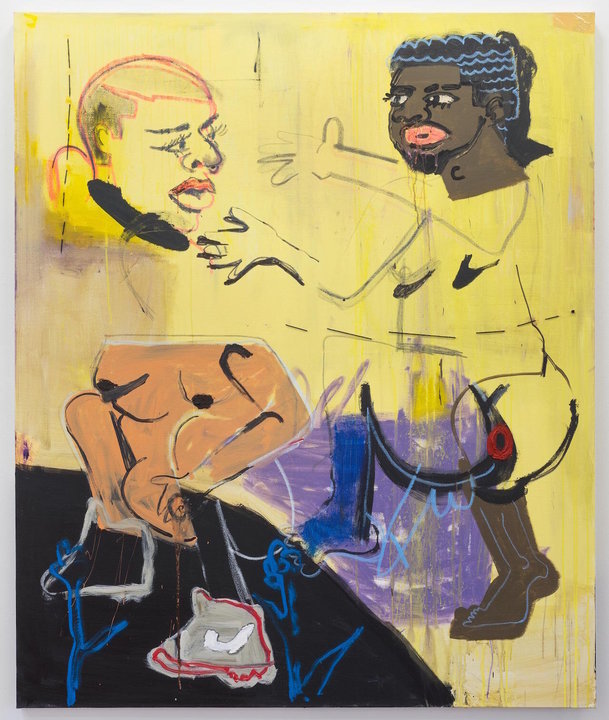
2. Ana Segovia
Mexico-born, Chicago-based artist Ana Segovia creates beguiling, dream-like paintings that contemplate, subvert and deconstruct traditional ideas of identity, particularly with regards to masculinity. She works from source imagery – predominantly film stills – seeking out pictures that “are as enigmatic as they are familiar”, as she tells Limna, and transforming them into something new through “painting’s own particular language”.
When picking her protagonists, Segovia hones in on “archetypes that point to no individual in particular, but rather a universalised idea of an identity that’s been constructed”. Most of the figures that populate her colourful, spatially ambiguous scenes are stripped of distinguishing facial features, leaving the viewer to examine the other visual and cultural signifiers within the frame – clothing, books, gestures – in order to read the identity being projected. “The idea is to point towards the ‘plasticity’ of these identities, allegorically through paint,” the rising artist expands. “To make the emptiness of these mass produced ideals explicit.”
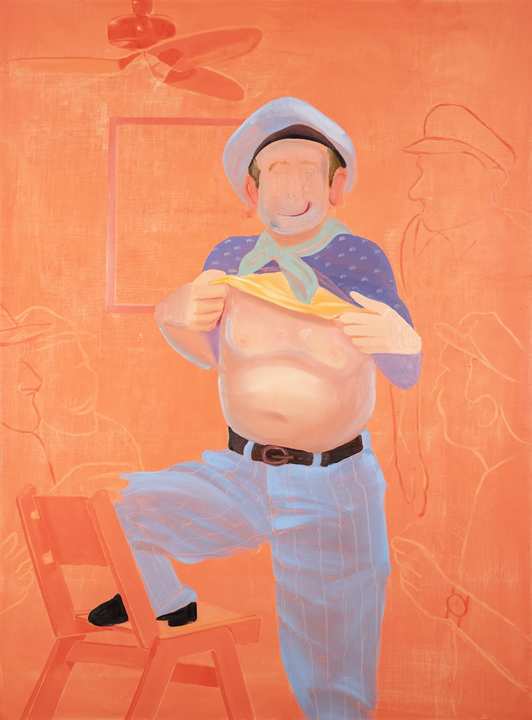
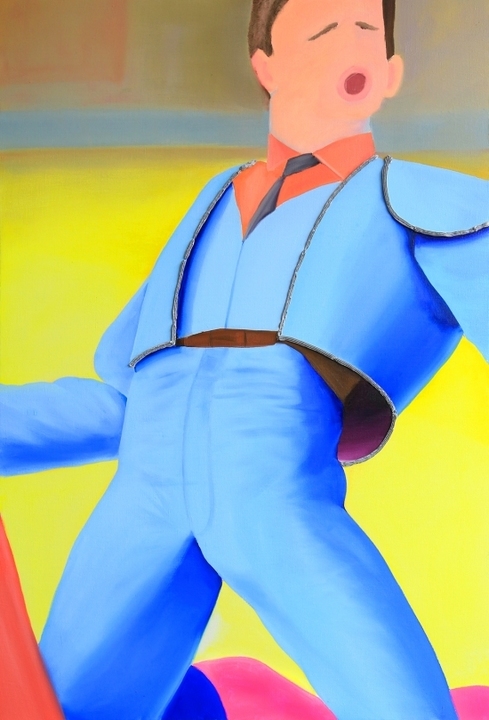
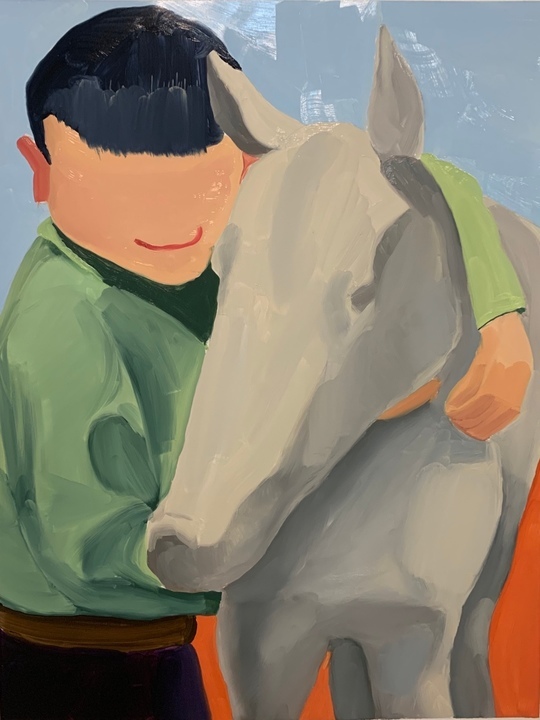
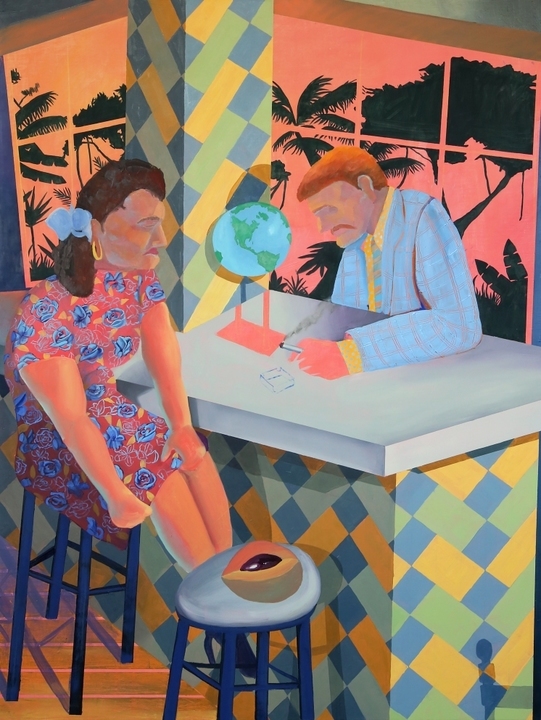
3. Arcmanoro Niles
New York-based artist Arcmanoro Niles paints seemingly mundane moments of everyday life, enlivened by an eye-popping use of colour (oranges, pinks, purples, blue, greens and warm gold to convey the luminous tones of his subjects’ brown skin) and glitter. These are largely autobiographical, based on old photographs of relatives and friends, and remembered snapshots of his past, featuring in many public and private collections in the US and beyond.
From lovers in a bedroom to family members gathered in a kitchen, Niles’ intimate scenes investigate the behaviours and rituals of those surrounding him, focusing on ideas of identity, responsibility and suppressed desire (represented by the small, impulsive gremlins included in each of his works). Like the art historical references that underscore them, spanning Italian and Dutch baroque through ancient Egyptian sculpture, Niles’ works are an evocative encapsulation of his own life and times. As he told Hyperallergic, “At the end of the day, I am interested in colour and stories that talk about who we are… [and] what life feels like.”
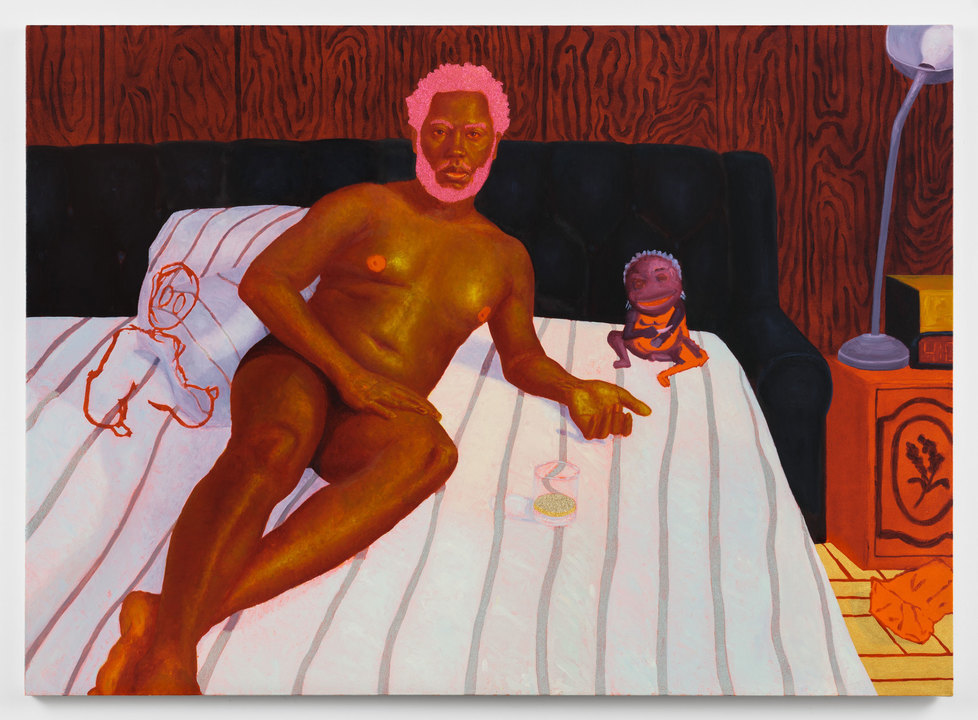
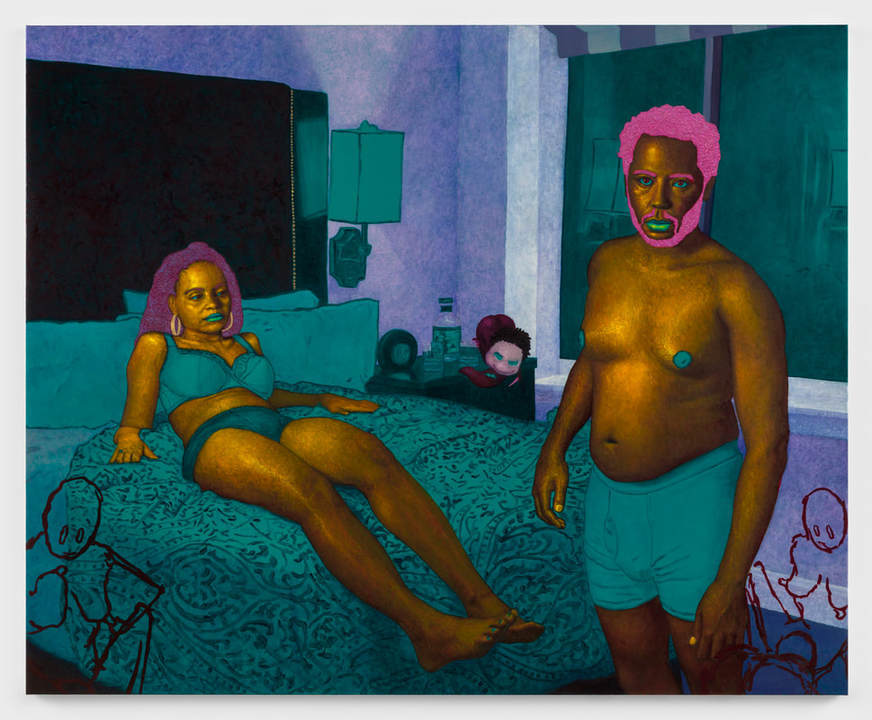
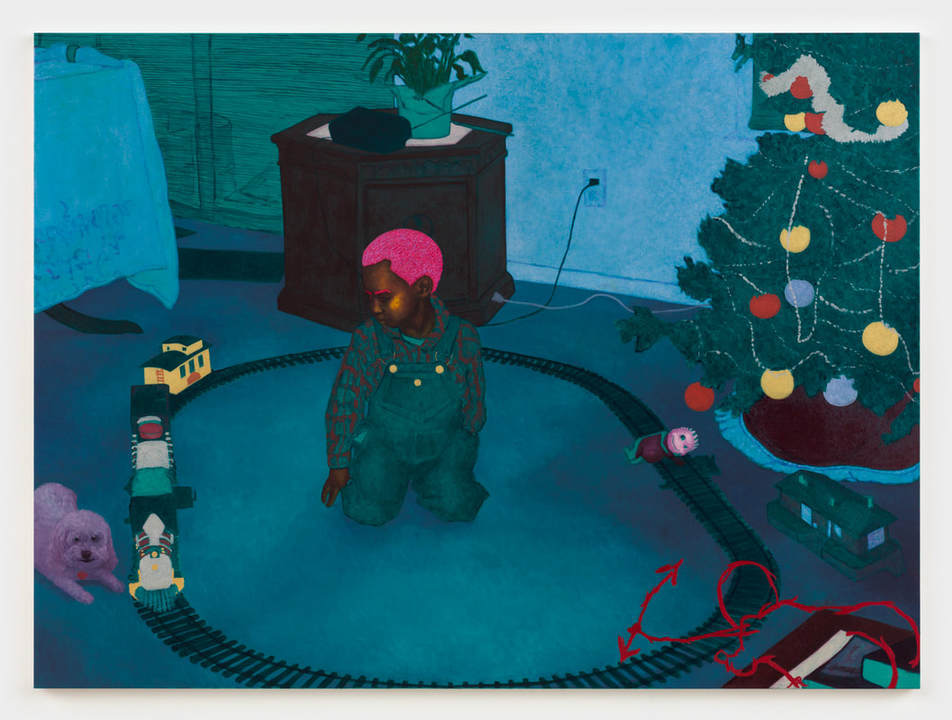
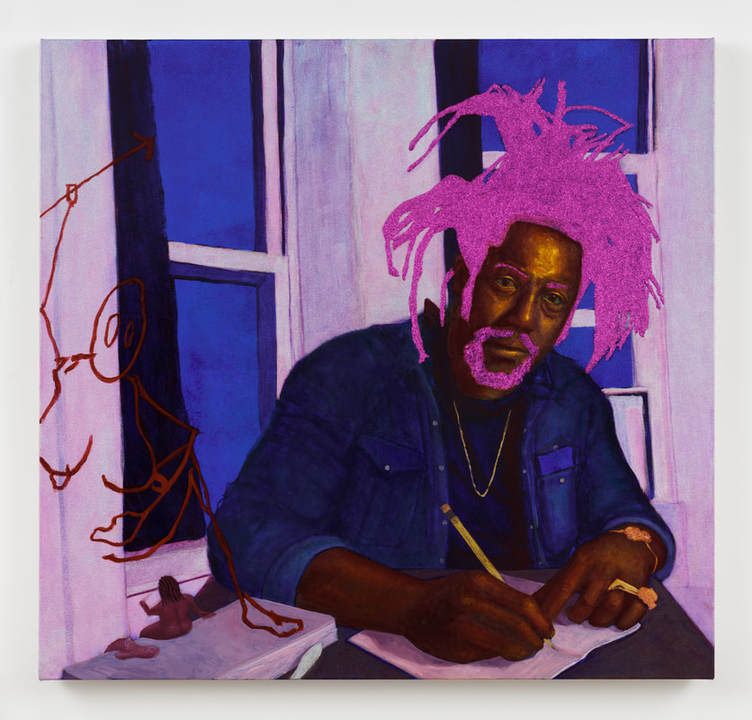
4. Gabriella Sanchez
Up-and-coming multidisciplinary artist Gabriella Sanchez makes compositional collage paintings that act as “vibrant, sprawling puzzles”, according to her artist’s statement, which the viewer must work to interpret. These coveted pieces include references to a vast array of well-known written and visual works – from the paintings of Ed Ruscha to the writings of Oscar Wilde – as well as quotidian objects like flowers or street signs and scenes lifted from family photographs.
Every element of Sanchez’s paintings acts as a signifier of sorts that speaks to – or against – the cis-gendered, Eurocentric hegemony. At the centre of her practice, she has said, is a desire to explore “how the duality of identity gets concretized in, and by, contemporary culture: the Mexican and American, us and them, the personal and the sociocultural”. How we, as individuals, dissect her visual cues is of equal importance to the artist, a former graphic designer, who “treats the ambiguity of her marks as psychographics: revealing truths about the viewer themselves.”
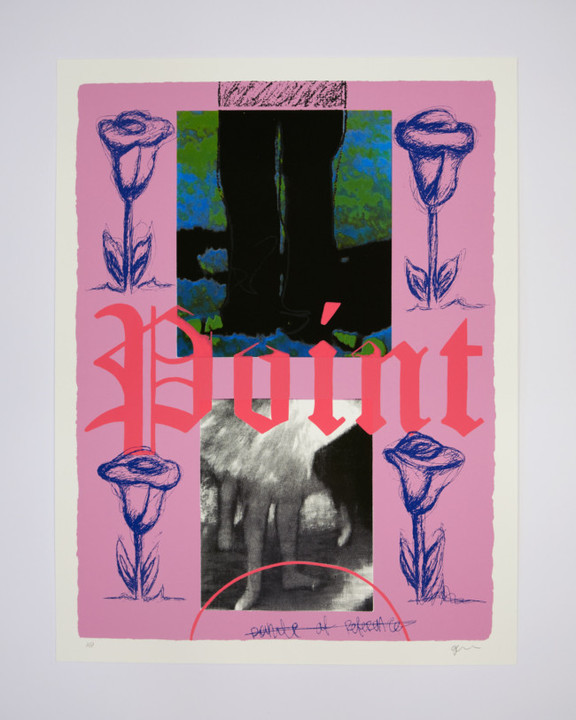
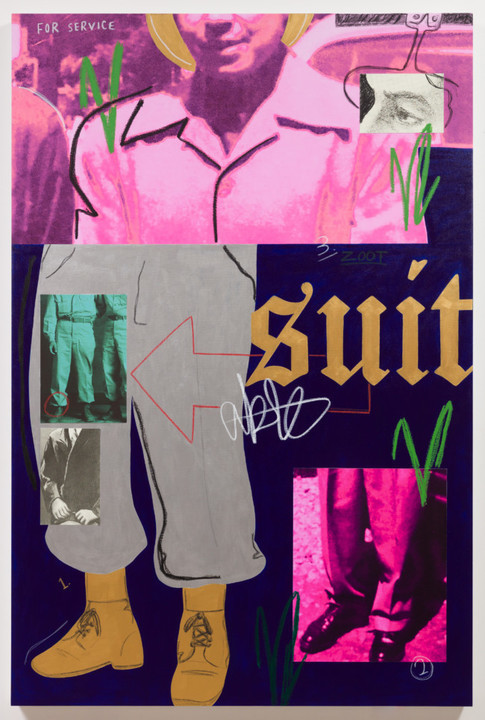
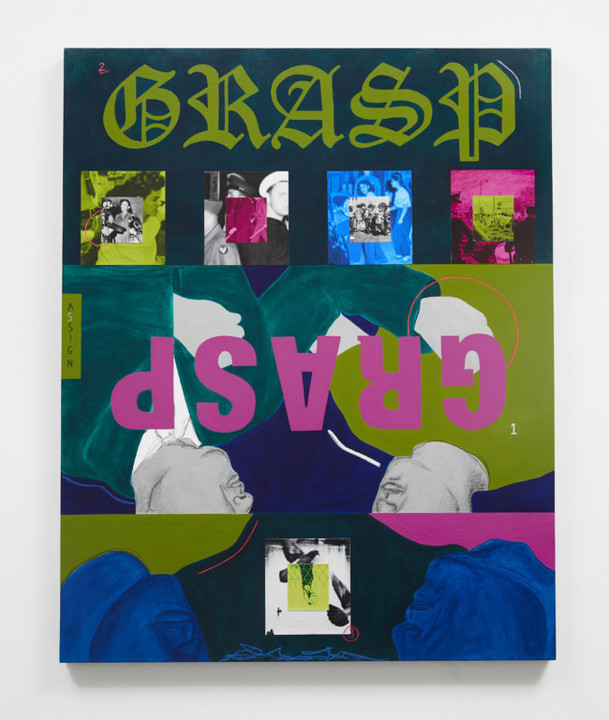
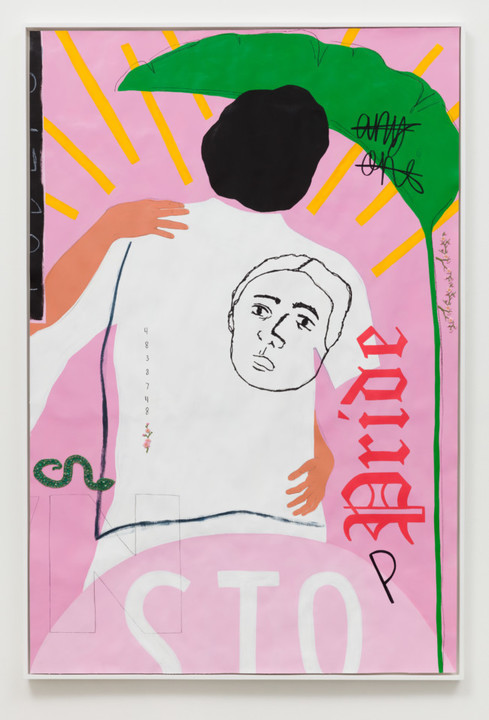
5. Chiffon Thomas
Identifying as a non-binary queer person of colour, New Haven-based artist Chiffon Thomas’ intensely personal output explores “the difficulties faced by defining one’s identity in contemporary society” (Kohn Gallery). Their work – which spans hand-embroidered mixed-media painting, collage, drawing and sculpture – traverses the line between the figurative and the abstract to zoom in on the concept of the self, and just how multifaceted, shifting, and splintered our sense of it can be.
Thomas uses archive family photos and myriad cultural references to inform the dynamic set-ups they conjure, peppered as they are with figures that symbolise “the simultaneous vulnerability and power required to uphold communities, cultures and identities”. While there are plenty of philosophical and psychological threads to unravel within them, the initial response these highly charged work elicits is a deliberately visceral one. “I need kinetic energy to be present in the works,” explained the artist, who was selected as one of Forbes magazine’s 30 Under 30 in 2020, “because I want to engage the viewer and engulf them in the emotions I am experiencing.”
_Black-pigment-paint-chalk-pastels-bible-books-semi-rigid-plastic-polyurethane-foam_43.2x22.9x30.5cm.jpeg)
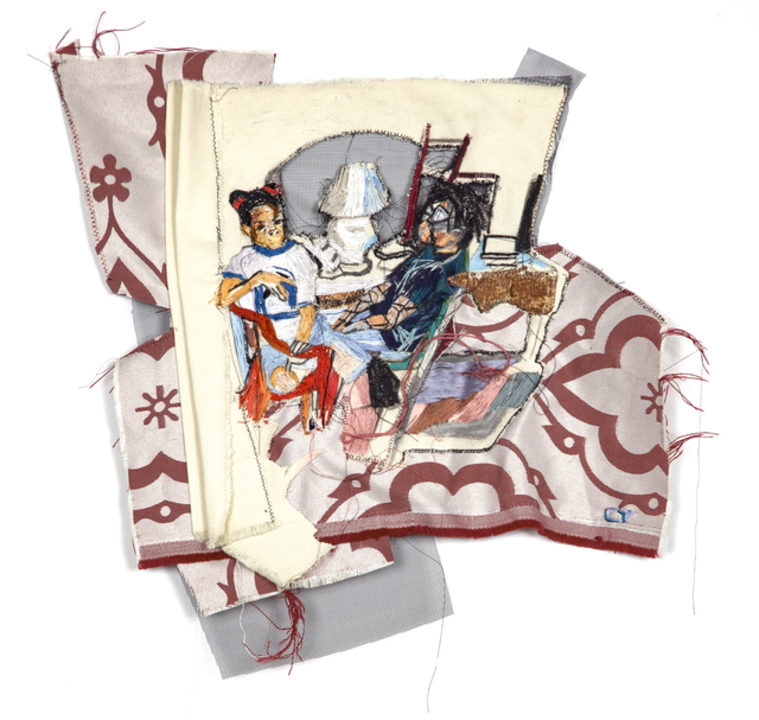
_Graphite-pencil-and-charcoal-on-paper_33.7x24.1cm.jpeg)
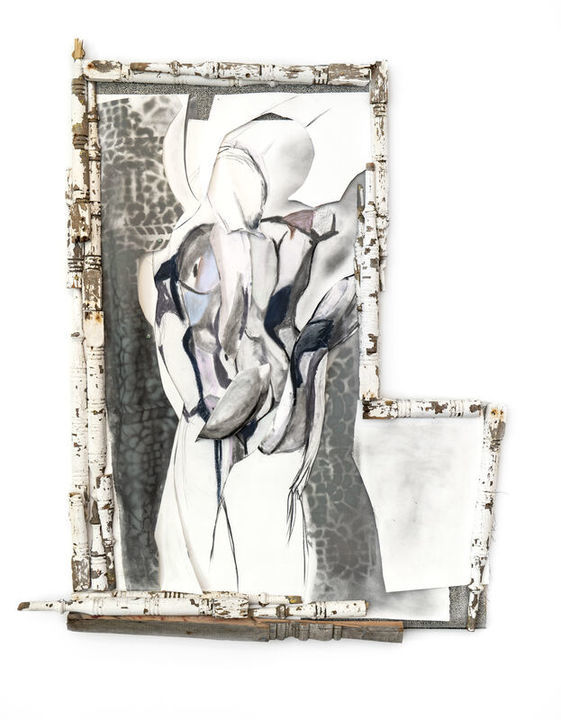
6. Theresa Chromati
“What’s important to me is the partnership, the community and the diversity in Black women. I feel like it’s my responsibility to share these nuances,” Guyanese American multimedia artist Theresa Chromati told The Fader of her supremely energetic and empowered depictions of the Black female experience, partially inspired by the women she met during her formative years in Baltimore.
Set against graphically rendered backdrops, and frequently accompanied by “layered audio melodic soundscapes”, Chromati’s painted protagonists are defined by their full figures and “whimsical protective armour”, ranging from masks and pussy lips to chest keloids realised in glitter. The effect is a celebratory ode to self-identity and strength, offering insight into, what her gallery, New Image Art, terms “the spectrum of experiences that exist for women within public and private spaces, exceeding the limitations traditionally imposed on them.” A vital, ascendant voice, Chromati’s career has seen a two percent increase in momentum since 2019, and is continuing to gain traction.
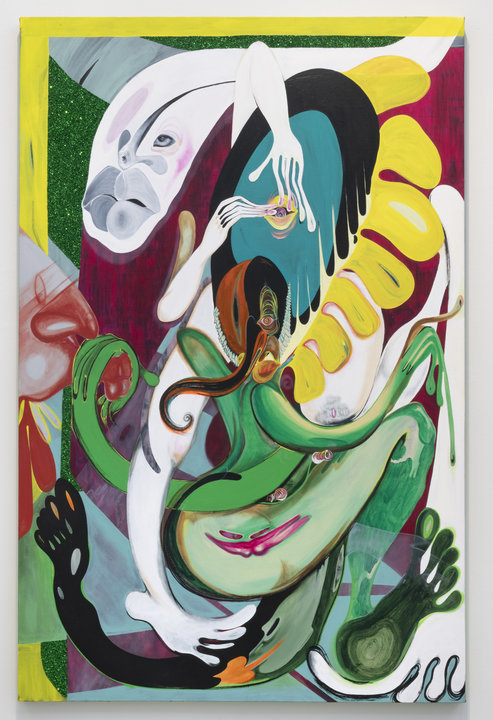

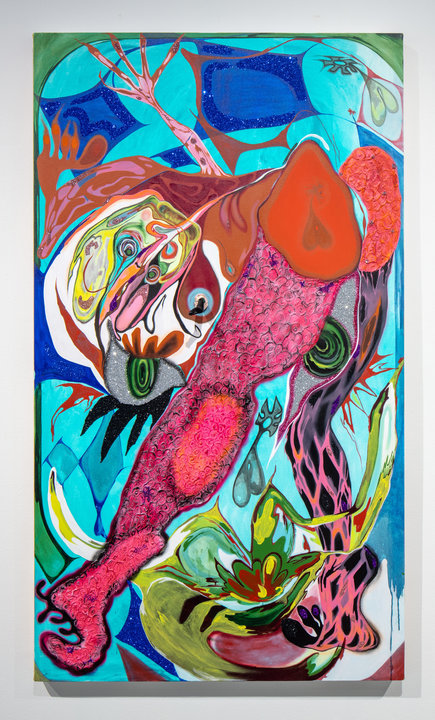
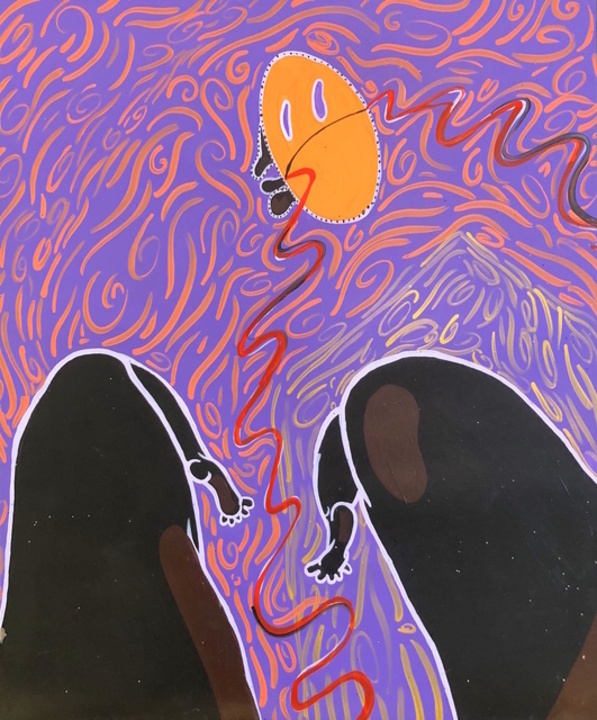
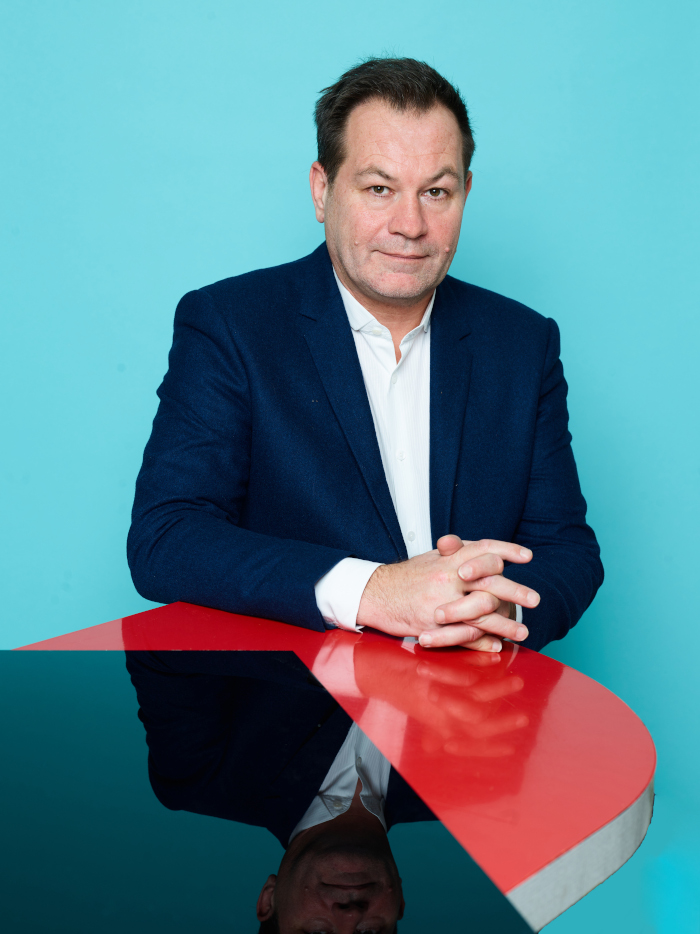

-min.jpeg)